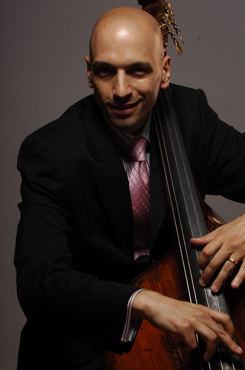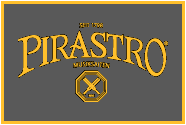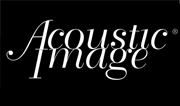My Earplug Odyssey
I have been a fan of earplugs for a long time, but it wasn’t until I lost my custom moulded pair that I reflected on my long term relationship with these little silicone live savers.
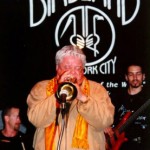 I’ve been playing gigs since I was about 14 years old, but it wasn’t until I went on the road with Maynard Ferguson that I realized it was time to fill in ye olde ear holes. I vividly remember my first rehearsal with Maynard. We were set up in an empty hotel room in Indiana. Two saxes, three trumpets, trombone, piano, bass, drums, and Maynard. Now, if you’re not familiar with trumpet players, they can really hurt their lips if they can’t hear themselves properly. That being the case, Maynard was playing into a microphone which was being piped though two stage monitors at his feet. You heard me right. I was standing three feet from the legendary Maynard Ferguson, in a small room, whilst he played double Cs into a PA system!
I’ve been playing gigs since I was about 14 years old, but it wasn’t until I went on the road with Maynard Ferguson that I realized it was time to fill in ye olde ear holes. I vividly remember my first rehearsal with Maynard. We were set up in an empty hotel room in Indiana. Two saxes, three trumpets, trombone, piano, bass, drums, and Maynard. Now, if you’re not familiar with trumpet players, they can really hurt their lips if they can’t hear themselves properly. That being the case, Maynard was playing into a microphone which was being piped though two stage monitors at his feet. You heard me right. I was standing three feet from the legendary Maynard Ferguson, in a small room, whilst he played double Cs into a PA system!
I was rooming with the drummer that first tour. My first impression of my new roommate was “wow, he likes the TV volume cranked up pretty high.” I soon realized that it wasn’t just him. You could walk down the hotel hallway and pick out who was in the band by listening for TVs. It wasn’t until weeks later that I realized my roommate finally eased off of the TV volume. Of course, that wasn’t the case. I quickly woke up to the fact that my hearing was less sensitive after a few weeks of gigs. That’s when I called my dad.
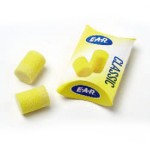 My dad was working for GM at the time, and they had these simple disposable foam plugs that blocked nearly ALL sound from your ears. I believe they were rated for a whopping 30db reduction! The problem was, I was having trouble making music with them stuck in my ears, since they hardly let ANY sound in. It’s tricky trying to blend with a band when you can’t hear your bandmates. Still, since I was facing potential hearing loss, I made myself deal with it. I was standing on the floor between the drums and three monster trumpet players. They were all on small risers, which placed the bells of the trumpets were pretty far above me. The drummer’s high hat, however, was right next to my right ear. Then there was the (not so) small matter of Maynard, who was directly in front of me with two monitors facing back at us. Oh, and lets not forget my own giant amp, which was right behind me. After those first few weeks, I had my dad mail me some plugs immediately!
My dad was working for GM at the time, and they had these simple disposable foam plugs that blocked nearly ALL sound from your ears. I believe they were rated for a whopping 30db reduction! The problem was, I was having trouble making music with them stuck in my ears, since they hardly let ANY sound in. It’s tricky trying to blend with a band when you can’t hear your bandmates. Still, since I was facing potential hearing loss, I made myself deal with it. I was standing on the floor between the drums and three monster trumpet players. They were all on small risers, which placed the bells of the trumpets were pretty far above me. The drummer’s high hat, however, was right next to my right ear. Then there was the (not so) small matter of Maynard, who was directly in front of me with two monitors facing back at us. Oh, and lets not forget my own giant amp, which was right behind me. After those first few weeks, I had my dad mail me some plugs immediately!
Those first few tours with Maynard were filled with expEARimentation (trade mark!). I would stuff the plugs deep into my ear for every tune that I was playing electric bass on, since I didn’t have to worry about intonation. The drums were so close to my head, I didn’t have any problems hearing the beat. On the acoustic bass songs, I pulled my left plug out a little bit so that a little more sound could come in. Since the bells of the trumpets were a bit in front of me and high above, this was the safest side of my head to let some sound in. I did this for a few tours until I discovered that there were companies that actually designed earplugs made especially for musicians.
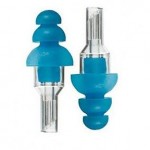 I can’t remember the exact brand that I first tried (they may have been Etymotics, which I recently re-discovered after I lost my custom plugs. More on that in a minute). You may have seen these style of plugs before. They kind of look like stacked mushrooms that decrease in size as they get to the tip. On a recommendation from a friend, I picked up a 20db pair and was amazed at the sonic difference. I still felt protected, but I could hear the music so much better! I didn’t feel the need to pull one earplug out to hear myself. On the contrary, I could actually hear myself better. I lived with these for the next 10 years.
I can’t remember the exact brand that I first tried (they may have been Etymotics, which I recently re-discovered after I lost my custom plugs. More on that in a minute). You may have seen these style of plugs before. They kind of look like stacked mushrooms that decrease in size as they get to the tip. On a recommendation from a friend, I picked up a 20db pair and was amazed at the sonic difference. I still felt protected, but I could hear the music so much better! I didn’t feel the need to pull one earplug out to hear myself. On the contrary, I could actually hear myself better. I lived with these for the next 10 years.
After moving to NYC, I began playing with Vanguard Jazz Orchestra on Monday nights. At first, I was subbing regularly for the legendary Dennis Irwin, which turned into a full time position when he became ill. When I was just popping in for a gig or two here and there, I took my chances and left my earplugs at home. The dynamic range of that band is huge, and I was having trouble adjusting to playing with plugs in during the quite piano trio sections, which are a hallmark of that band. Since I would just do a gig a week for a few weeks in a row at first, I thought that making sure I sounded my best outweighed any potential damage that I may incur.
When Dennis fell ill and I stepped in on a weekly basis, I realized that I needed to start protecting myself. By that point, I had been subbing with the band for about eight years, so I was pretty comfortable with the music. I saw an ad in the local 802 Musicians Union for a free hearing test and earplug fitting. I’ve always wanted to have custom moulded plugs, so I scheduled an appointment.
I was relieved to see the results of my first hearing test. Everything looked great, with only a slight notch in my left ear, which was most likely due the fact that I played with the Vanguard Band the night before. The trumpets were behind me and to my left, so I was getting a really good blast on that side of my head! Unfortunately, I couldn’t get fitted that day because I didn’t realize that I needed to clean my ears before hand. The audiologist squeezes a bunch of goop into your ear, which solidifies and creates a mould of your inner ear so that they can make the plugs. Even the slightest bit of ear wax will create imperfections in the mould that will result in a less than optimal fit.
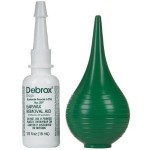 So, that was a minor setback. I scheduled another appointment and made sure to clean my ears the night before with an over the counter kit I bought at the local pharmacy. Wow, it’s amazing how much high-end you get back after you clean your ears. Follow this link for more information about ear cleaning. Anyway, when I went back to get fitted the 2nd time, I got another hearing test. In the time between tests I started wearing one plug in my left ear at the Vanguard just to be safe. I was curious to see if maybe my left ear was a little fatigued at my first test since I played at at the Vanguard 12 hours before hand. Sure enough, the results at my 2nd hearing test were better, but still not perfect. With clean canals, I was ready for the goop!
So, that was a minor setback. I scheduled another appointment and made sure to clean my ears the night before with an over the counter kit I bought at the local pharmacy. Wow, it’s amazing how much high-end you get back after you clean your ears. Follow this link for more information about ear cleaning. Anyway, when I went back to get fitted the 2nd time, I got another hearing test. In the time between tests I started wearing one plug in my left ear at the Vanguard just to be safe. I was curious to see if maybe my left ear was a little fatigued at my first test since I played at at the Vanguard 12 hours before hand. Sure enough, the results at my 2nd hearing test were better, but still not perfect. With clean canals, I was ready for the goop!
 A few weeks later, my new plugs arrived. They’re pretty weird looking, since the are the exact opposite shape of your inner ear. Because of that, they fit amazingly snug into your ear so that no sound can sneak past them. The only entry into your head is through the center of the plugs, which are blocked by a small circular baffle that has a db rating. You can choose between 9db, 15db, or 25db baffles. I decided to pick up the 9 and 15db baffles. These are by far the best sounding type of plugs that you can get, and they’re also the most comfortable. Of course, all of that comes at a price– a trip to the audiologist, sending the moulds to an ear plug company, multiple sets of baffles cost a little more, and return shipping. Fortunately, the American Federation of Musicians has a program to help subsidize the cost for it’s members, so my grand total was $170. Considering you can buy the ribbed musician plugs for $12, that’s a pretty hefty price difference.
A few weeks later, my new plugs arrived. They’re pretty weird looking, since the are the exact opposite shape of your inner ear. Because of that, they fit amazingly snug into your ear so that no sound can sneak past them. The only entry into your head is through the center of the plugs, which are blocked by a small circular baffle that has a db rating. You can choose between 9db, 15db, or 25db baffles. I decided to pick up the 9 and 15db baffles. These are by far the best sounding type of plugs that you can get, and they’re also the most comfortable. Of course, all of that comes at a price– a trip to the audiologist, sending the moulds to an ear plug company, multiple sets of baffles cost a little more, and return shipping. Fortunately, the American Federation of Musicians has a program to help subsidize the cost for it’s members, so my grand total was $170. Considering you can buy the ribbed musician plugs for $12, that’s a pretty hefty price difference.
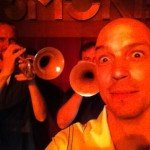 You can understand why I would be so upset when I forgot my plugs at my current regular Monday night gig at Smoke with the Bill Mobley Big Band! I went back the next week, but they were lost in the shuffle of acts that come through the club every week. I went into a panic! Forget about the cost of the plugs or how long the replacement process was going to be. I needed something that could protect me ASAP because I had the entire trumpet section literally one foot from the back of my head! It’s a tight squeeze on that stage, and can actually feel the fourth trumpet players’ air stream on the back of my neck. For the first night, I ran to a local pharmacy and bought a pair of foam plugs. Great protection, but I couldn’t hear a dang thing. No fun at all! That night I jumped on Amazon.com and ordered a pair of the ribbed musician plugs for the next week. I forgot how good they sounded, actually. I made do with them for a month until I could get fitted for another pair of custom fitted plugs. The custom are so much more comfortable and they sound even better. Personally, I feel that they are worth the extra money. This time I made sure to write my name all over their protective pouch!
You can understand why I would be so upset when I forgot my plugs at my current regular Monday night gig at Smoke with the Bill Mobley Big Band! I went back the next week, but they were lost in the shuffle of acts that come through the club every week. I went into a panic! Forget about the cost of the plugs or how long the replacement process was going to be. I needed something that could protect me ASAP because I had the entire trumpet section literally one foot from the back of my head! It’s a tight squeeze on that stage, and can actually feel the fourth trumpet players’ air stream on the back of my neck. For the first night, I ran to a local pharmacy and bought a pair of foam plugs. Great protection, but I couldn’t hear a dang thing. No fun at all! That night I jumped on Amazon.com and ordered a pair of the ribbed musician plugs for the next week. I forgot how good they sounded, actually. I made do with them for a month until I could get fitted for another pair of custom fitted plugs. The custom are so much more comfortable and they sound even better. Personally, I feel that they are worth the extra money. This time I made sure to write my name all over their protective pouch!
I have one more little tidbit of information I learned from my good friend and guitarist Tony Romano. He had someone over doing a little drywall work at his house one day. Tony noticed that the person put in ear plugs when he started the drywall sanding process. Would you care to take a guess as to why?
Hearing loss isn’t solely caused by high volume and loud sounds. You can also damage your hearing by repeatedly listening to one frequency! In this case, the pitch created by sanding drywall, which was pretty much the same “note” every time, damaged the worker’s hearing to the point that he had a bit of tinnitus. You know what tinnitus is. We’ve all had a temporary case of tinnitus at one time or another– a faint ringing in your ear. In his case, however, it wasn’t so slight anymore and it wouldn’t go away. If you’re a drummer, you are going to experience this same type of hearing damage because of your ride cymbals. You don’t have to bash them to hurt yourself. Just having that one pitch being played in close proximity to your head is enough to begin the process of notching your hearing. That goes for anyone that plays with a drummer! As a bassist, I’m always standing close to the drum set. Now that I know this dirty secret of hearing loss, I started wearing my ear plugs on all my gigs, even the “quite” gigs.
In conclusion, if you think that wearing ear protection hinders your ability to have fun and make music, then I would like to suggest that you probably haven’t found the right ear plugs yet. Even a mere 9db of noise reduction saves pressure on your sensitive ear drums, so you should at least wear something. Here (hear) are some helpful links.
Firstly, though I am not an endorser, here’s a link to the company I prefer for ear plugs of all kinds: Etymotic
The American Tinnitus Association
Musicians and Hearing Loss: Interview with Marshall Chasin, Aud. from the American Academy of Audiology
And of course, we cannot forget the contributions to hearing loss awareness made by H.E.A.R., which is a non-profit organization dedicated to helping musicians and music lovers protect their hearing.









